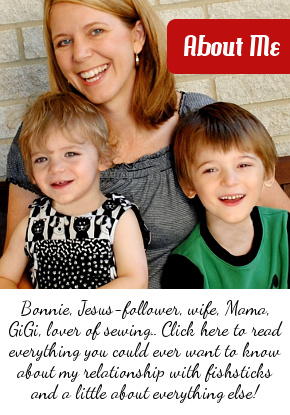Real Food Recipes
Maple Oatmeal Blueberry Crumble
 Blueberry season is just wrapping up here in Texas which I think means it’s probably in full swing north of here. Our house is full of blueberry lovers, so when I was presented with an amazing deal on 1 1/2 gallons of fresh organic blueberries straight from the farm, how could I possibly pass it up? (I was actually excited not to have to take Charlie to the store to purchase these. He thinks blueberries are the best food ever created, but because he’s only two, he doesn’t say “blueberries” well. It comes out “boobies”. Have you ever stood in the produce department of a grocery store with a two-year-old screaming excitedly while bouncing in the cart, “BOOBIES! BOOBIES! BOOBIES!”?)
Blueberry season is just wrapping up here in Texas which I think means it’s probably in full swing north of here. Our house is full of blueberry lovers, so when I was presented with an amazing deal on 1 1/2 gallons of fresh organic blueberries straight from the farm, how could I possibly pass it up? (I was actually excited not to have to take Charlie to the store to purchase these. He thinks blueberries are the best food ever created, but because he’s only two, he doesn’t say “blueberries” well. It comes out “boobies”. Have you ever stood in the produce department of a grocery store with a two-year-old screaming excitedly while bouncing in the cart, “BOOBIES! BOOBIES! BOOBIES!”?)
 We’ve eaten loads of these straight from the bowl. We’ve made blueberry muffins, but for some reason, my kids don’t care for them much. They did inhale the blueberry maple syrup that I made with our weekly pancake dinner, though. (I used this recipe: Blueberry Maple Syrup.) Because we’re moving across the country, I didn’t want to freeze any, so I needed to come up with a recipe that we all really liked that would get these blueberries eaten! Enter my Maple Oatmeal Blueberry Crumble.
We’ve eaten loads of these straight from the bowl. We’ve made blueberry muffins, but for some reason, my kids don’t care for them much. They did inhale the blueberry maple syrup that I made with our weekly pancake dinner, though. (I used this recipe: Blueberry Maple Syrup.) Because we’re moving across the country, I didn’t want to freeze any, so I needed to come up with a recipe that we all really liked that would get these blueberries eaten! Enter my Maple Oatmeal Blueberry Crumble.
 The Ingredient List
The Ingredient List
3 1/2 – 5 cups of blueberries (Blueberries are one of the “Dirty Dozen“, so try to choose organic only. Be sure that you’ve removed all the stems.)
3 tablespoons of maple syrup
2 1/2 cups of white whole wheat flour
2 cups of rolled oats
1 cup of maple syrup
1 1/2 teaspoons of ground cinnamon
1 cup of butter
Preheat oven to 350 degrees.
Pour blueberries into a bowl. Drizzle the 3 tablespoons of maple syrup over them and toss them lightly to cover. Set the berries aside.
 Melt butter.
Melt butter.
 In a separate large bowl, combine flour, oats and cinnamon.
In a separate large bowl, combine flour, oats and cinnamon. Pour 1 cup of maple syrup into the melted butter and stir.
Pour 1 cup of maple syrup into the melted butter and stir. Combine the butter/maple syrup combination with the dry ingredient.
Combine the butter/maple syrup combination with the dry ingredient. Enlist the help of any early risers. (Jamie helped me make this batch for breakfast yesterday. Please excuse his almost-too-small-just-woke-up-wrinkled-mama-made jammies! They were a great fit when I made them over a year ago. You can peek back at them and see how much he’s grown right here.)
Enlist the help of any early risers. (Jamie helped me make this batch for breakfast yesterday. Please excuse his almost-too-small-just-woke-up-wrinkled-mama-made jammies! They were a great fit when I made them over a year ago. You can peek back at them and see how much he’s grown right here.) Once the crumble is all mixed, pour about half of it into a buttered 9 1/2 x 11 glass or ceramic baking dish. Press it in well. If it’s sticky, try wetting your fingers a little, or just lick it off your fingers when you’re finished!
Once the crumble is all mixed, pour about half of it into a buttered 9 1/2 x 11 glass or ceramic baking dish. Press it in well. If it’s sticky, try wetting your fingers a little, or just lick it off your fingers when you’re finished! Pour the blueberries evenly over the top.
Pour the blueberries evenly over the top. Use your fingers to sprinkle the remaining crumble over the top.
Use your fingers to sprinkle the remaining crumble over the top. Bake for 35 to 45 minutes until the topping is browned and the blueberries are bubbling up on the sides. Go ahead and try to resist the urge to grab one of those crumbles off of the top. They’re so yummy! (I wonder how this would work as an oatmeal cookie . . . might have to try that.)
Bake for 35 to 45 minutes until the topping is browned and the blueberries are bubbling up on the sides. Go ahead and try to resist the urge to grab one of those crumbles off of the top. They’re so yummy! (I wonder how this would work as an oatmeal cookie . . . might have to try that.) Enjoy!
Enjoy!  (A tiny little word of caution: when you eat this straight from the oven, it may temporarily turn your teeth slightly purple. Your children will think this is absolutely hilarious. If you’re serving company, they may not feel the same way, but if you add a little homemade vanilla ice cream, they’ll totally forgive you!)
(A tiny little word of caution: when you eat this straight from the oven, it may temporarily turn your teeth slightly purple. Your children will think this is absolutely hilarious. If you’re serving company, they may not feel the same way, but if you add a little homemade vanilla ice cream, they’ll totally forgive you!)
My Real Bread for Real People Recipe

I posted a little last week about our family’s journey towards eating real food. I’m not sure I mentioned, though, what a difference eating real makes in the way all of us feel, and that makes a difference in the way we all behave. The difference really stands out to me when we stumble back into our old ways and allow our children (or even ourselves) to have a little bit of processed food. The food we put into our bodies really affects our whole bodies. If you’re curious, do a little research into how ingredients like high fructose corn syrup (hfcs) and monosodium glutamate (msg) affect the brain. While you’re at it, check out how those same ingredients are often hidden under new names now that we’re becoming wiser consumers. The 100 Days of Real Food Blog is a great place to start!
When I first started looking at labels in the grocery store in an effort to find foods that are free of icky stuff, the bread aisle made my head spin. The number of ingredients in a store-bought “whole wheat” loaf of bread is crazy! The only choice I really had was to get brave and try this bread-making thing myself. I started out, once again, using recipes that I found online and changing up ingredients until I came up with a recipe and a method that works perfectly almost every time. Here’s the fine print: I’ve only been making my own bread for about 8 months, and I’ve only ever made bread in my home in Dallas. Bread is a weird thing. What works in one place, might not work as well elsewhere. Things like altitude and humidity affect bread in weird ways. I would actually love to hear from any of you who try out the recipe to know how it works for you!
The Ingredients:

For two loaves of bread
2 1/2 cups warm water
1/2 cup raw, unfiltered honey (local is best)
2 heaping tablespoons active dry yeast
6 cups whole wheat flour (white whole wheat flour gives the best results)
1 cup rolled oats
2 teaspoons sea salt
4 tablespoons coconut oil (or melted butter)
2 tablespoons apple cider vinegar (NOT distilled white vinegar!)
The only special equipment I use is my Kitchenaid mixer with the dough-kneading attachment.
Start by activating the yeast. I use warm filtered tap water from my sink. The water should be between 105 and 115 degrees. Water too hot will kill the yeast. Too cool and it won’t activate properly. I just feel it until it feels warm on my hand. Pour the water into your mixing bowl. Sprinkle the yeast on top. Add the honey. Mix it all together for maybe 20 seconds. Turn off the mixer and set a timer for five minutes.

While I’m waiting, I pop over to the other side of the kitchen, turn the oven on and get a batch of real muffins or cookies going to get the kitchen warmed up and ready to make the bread rise.
When the timer goes off, the mixture in your bowl should look white and bubbly or foamy.

Turn your mixer onto the lowest setting and begin adding the other ingredients. I add them in the order listed.

The consistency will change as you add each ingredient. When you add the apple cider vinegar, it will look (and sound) sticky. Let it mix until the mixture forms a dough. If the dough doesn’t form after a couple of minute, add a spoonful of flour at a time until it does. It’s actually okay for the dough to be a little sticky, though.

Let your mixer “knead” the dough for 5-10 minutes before removing it. You can let the dough rise in the mixing bowl if you’re only making two loaves. (I do six loaves at a time, once a week. We don’t eat a ton of bread, so six loaves lasts us through the week well.) If you are going to start a second batch, then press the dough down into a greased bowl. Otherwise, just press it down into the mixing bowl and move it over next to the stove to rise.

Cover it with a towel and go start your second batch. (I don’t clean the mixing bowl before I start a second batch. I just put it back on the mixer and start again at the top.)

Grease your baking pans while you wait for the dough to double in size. For me, each rising can take anywhere from 30 minutes to an hour, depending on the temperature of my kitchen and the weather outside. (I do avoid making bread when it’s rainy out because it just doesn’t turn out well.)

Punch the dough down and pull it out of the bowl. Pull the dough into two pieces. Hold the two pieces, one in each hand, and “weigh” it to get the two loaves as equal as possible. Press the each piece down into a greased loaf pan. (I grease my pans with softened real butter. I use a spoon to put the butter in the pan then spread it around with my hands. Be sure to grease the top edges of the pan in case your dough rises over the edges.)

Put the pans back in place near the warm stove and cover them again. Here are my six loaves in various stages of rising. (A tip here: Don’t move the loaf pans once they’re rising! If you do, the dough may fall in the middle, and you’ll end up with a concave loaf of bread that’s a little sticky in the middle. You’ll see further down that one of my loaves fell a little in the middle because I moved it to the stove top and took a few minutes to take pictures before putting it in the oven.)

Once the dough has doubled in size again, remove the towel and put it straight into your already preheated oven at 350 degrees.

I bake my loaves for exactly 35 minutes. It’s supposed to sound hollow inside when you thump it if it’s completely done.

Dump the bread out of the pans onto a cooling rack as soon as it comes out of the oven. If you don’t, the bottom and sides will get damp from moisture-evaporation.

Slice off a few pieces of the warm bread and serve it with real butter to the hungry family members who will come running as soon as they know it’s out of the oven. (Another tip: if you want to cool all of the bread to use later for sandwiches and such, bake it in the evening when the kids are in bed! I like to bake it after dinner, then I pop the loaves into our otherwise-useless over-the-stove microwave to cool overnight. We don’t use the microwave for cooking, but it works great for almost air-tight bread cooling.)

Six . . . I mean, 5 1/2 . . . loaves cooling.

Once the bread has cooled, I like to slice it with a serrated bread knife, about 1/4″ thick. This bread is heavier than store-bought bread, so slicing it thinner makes it nicer for sandwiches. It also makes it stretch further. I’ve found that I get nicer slices if I slice the bread upside down.

I only slice one loaf at a time. The rest I wrap in plastic wrap and store in the refrigerator. (I really need to come up with something reusable to replace the plastic wrap, though.) When we need a new loaf, I pull it out of the fridge and let it come to room temperature before slicing it. I keep the sliced bread stored on the counter in this BPA-free container from IKEA.

I know it seems like a lot of work, but it really only takes a few hours, once a week, and I’m not actually “working” on it much of that time. Once you get into a routine, baking fresh real bread just becomes routine.
An additional note: You can make this bread vegan and safe for little ones under one year by substituting turbinado sugar (evaporated cane juice) for the honey. To keep it vegan, you’ll need to be sure to use coconut oil rather than butter in the ingredients and for greasing the pans.
Real Muffins Make For Really Great Mornings

In spite of the name Fishsticks, which might lead you to believe that I feed my family . . . um . . . fishsticks, we actually eat virtually no processed food in our home at all. About four years ago, we started on a journey towards eating a healthy, natural, “real food” diet. Along the way, I’ve come up with a few recipes that we really enjoy. I’ve been promising friends and family that I’d share some of my recipes for ages, and I’m finally going to try doing so!
When we first stopped eating food from a box, breakfast was a really big issue. Before our big diet change, brightly-colored, sugary cereals and artificially-flavored instant oatmeal were our early morning choices. My children have always enjoyed muffins, though. You probably know the kind I mean, from a bagged mix, with dried bits of something that is supposed to be “fruit”. Anyway, muffins seemed to be a good place to start. I tried out quite a few recipes that I found online and in the cookbooks on our bookshelf. Eventually, I combined recipes and altered ingredients until this one emerged, and it’s become my go-to, ready-for-the-oven-in-10-minutes recipe.
The Great Mornings Muffin Recipe
The Ingredients:

For 2 dozen muffins
2 cups milk (or water, if you’d prefer to skip the milk)
2 cups rolled oats
2/3 cup butter (the real stuff, no margarine allowed) or coconut oil
2 eggs (local, organic, cage-free, if possible)
3/4 cup honey (local raw honey is the best) or real maple syrup (opt for the maple syrup if you have little ones under 12 months eating the muffins)
2 1/2 cups of whole wheat flour (we prefer white whole wheat)
1 tsp. sea salt
1 tsp. baking soda
2 tsp. baking powder (look for aluminum-free)
1 tbls. cinnamon
The Directions:
Preheat the oven to 375 degrees.
In a large mixing bowl, combine oats and milk (or water) and set aside. (This lets the oats soften up and makes them easier for your body to digest. The longer they soak, the better. If you’re a better planner than me, you can mix the oats and milk the night before and keep them in the refrigerator until you’re ready to mix up the rest of the ingredients in the morning.)

Toss the butter into a pan and melt it. (We’ve tried coconut oil in place of the butter, and it works well. We just prefer the texture and taste that we get from real butter.)

Measure flour into a large measuring cup. Add salt, baking soda, baking powder and cinnamon and mix them up in the measuring cup. (No need to pour them into a separate bowl, if there’s room in the measuring cup, right?)

Beat eggs in a separate bowl, then add eggs and honey (or maple syrup) to the oats and milk. Mix.

Mix in melted butter.

Pour in the dry ingredients and mix well.


Spoon into buttered muffin cups. I fill them about half full, and usually end up with about 2 1/2 dozen kid-size muffins. For larger, grown-up sized muffins fill the muffin cups about 2/3 full.

Bake at 375 degrees for 18-20 minutes.

Enjoy! I love these plain or with a little butter. My little ones prefer them with natural peanut butter. Yum!































